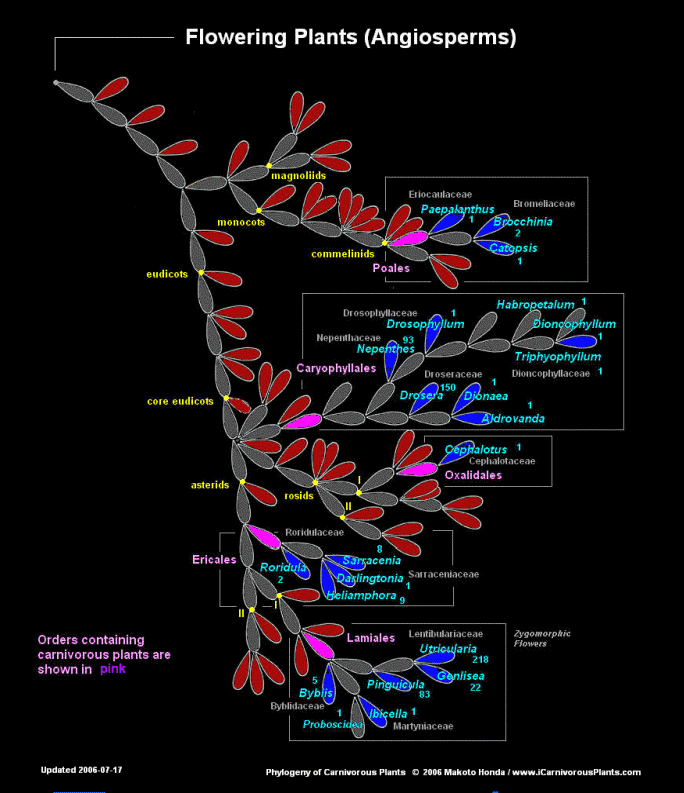| Heritage |
|---|
|
Just like all humans have ancestors represented by a family tree, the Venus Fly Trap also has a past in the form of a phylogenetic tree. It goes a little something like this ...
|
| How To Climb This Tree First of all, a phylogenetic tree represents how a particular species evolved. At each node (intersection) of the tree, a specific characteristic separates the organisms. These characteristics are written in yellow. Each of the boxes represents a particular order of angiosperms, which is written in pink. Lastly, the genus of a species in written in blue. The closer the genus is located to another, the closer they are related. The genus Dionaea is located in the second box. Where Does The Venus Fly Trap Come From? Dionaea muscipula is placed in the order Caryophyllales. Other members in this order include: Nepenthes, Drosophyllum, Habropetalum, Dioncophyllum, Triphyophyllum, Drosera, and Aldrovandra. They are all members of this order because they exhibit free-central or basal placentation. (For more details about classification, see the Home page). By looking at the tree, Drosera, Dionaea, and Aldrovandra are the close relatives to each other because of their characteristic trapping mechanism. Dionaea and Aldrovandra have the most advanced traps, therefore, they are the closest in relation of all other carnivorous plants. (Check out the Adapt to Trap page to see how this mechanism functions). |
